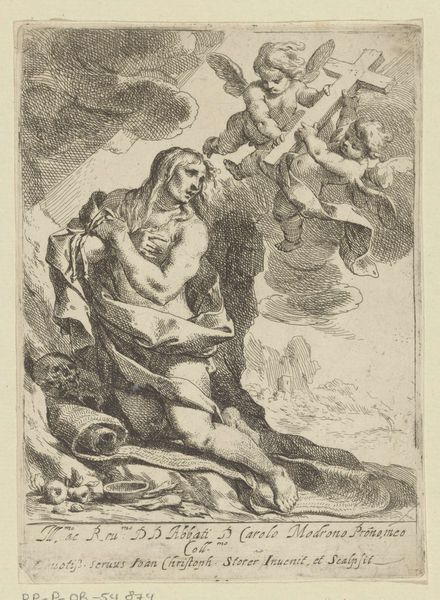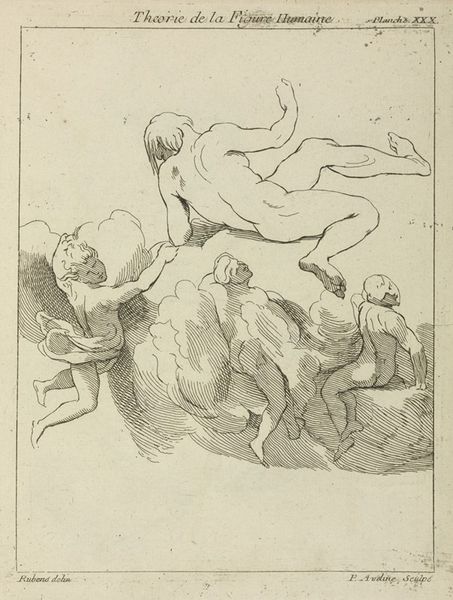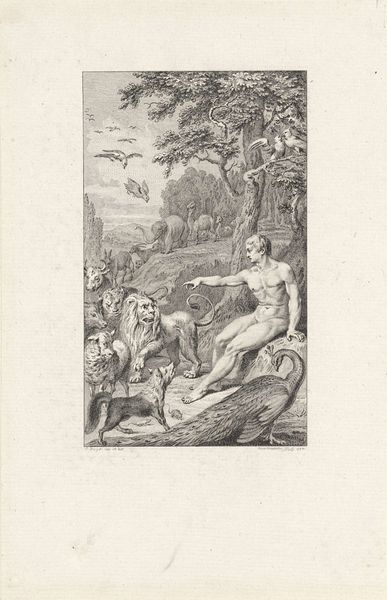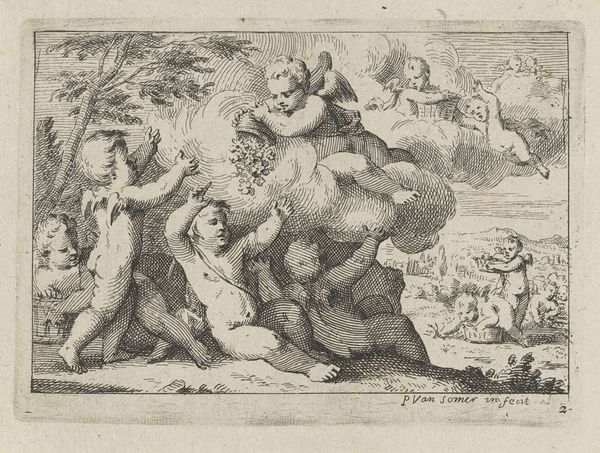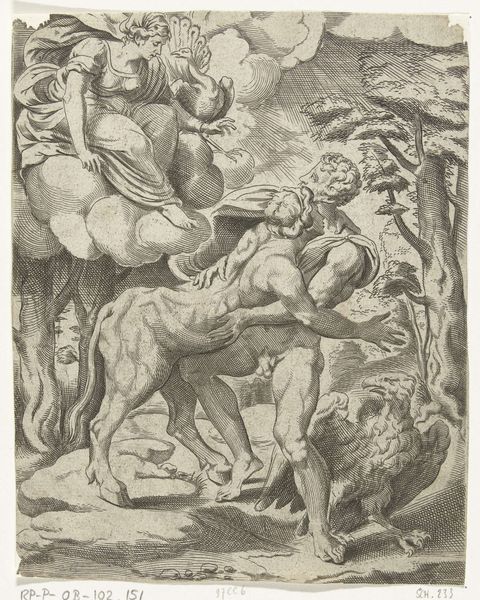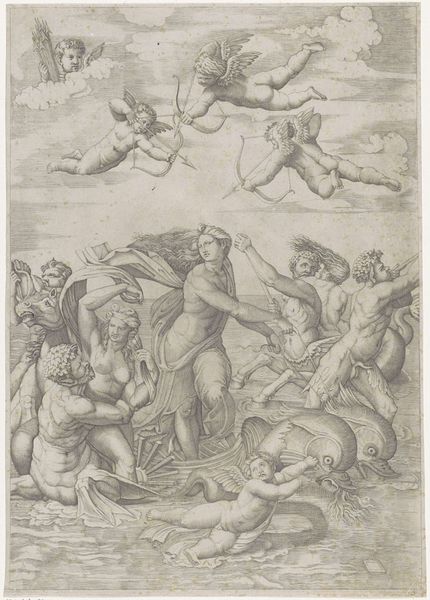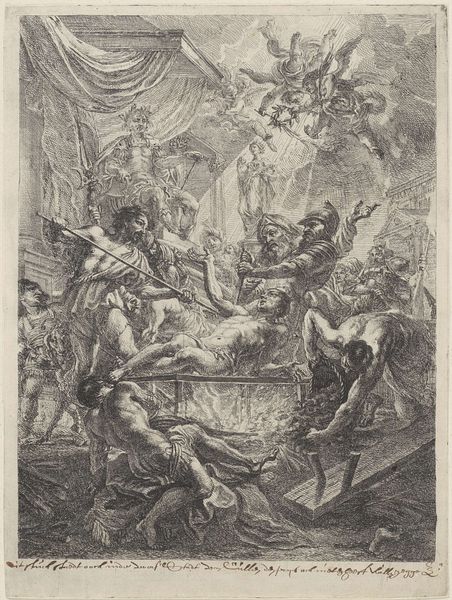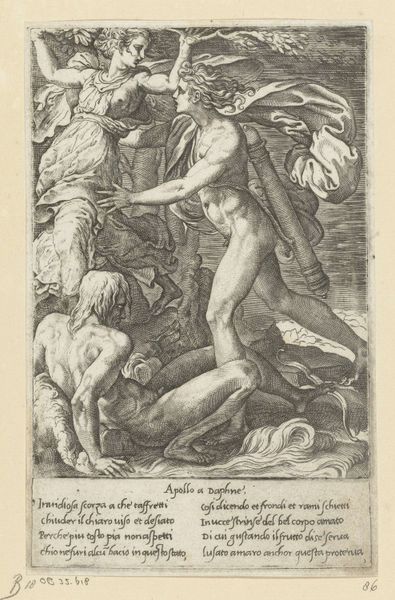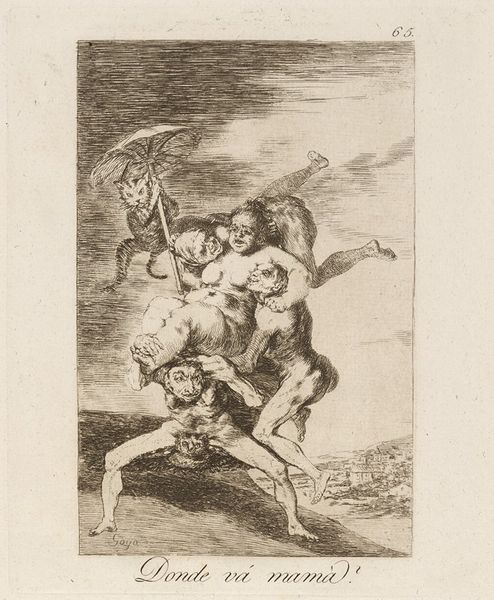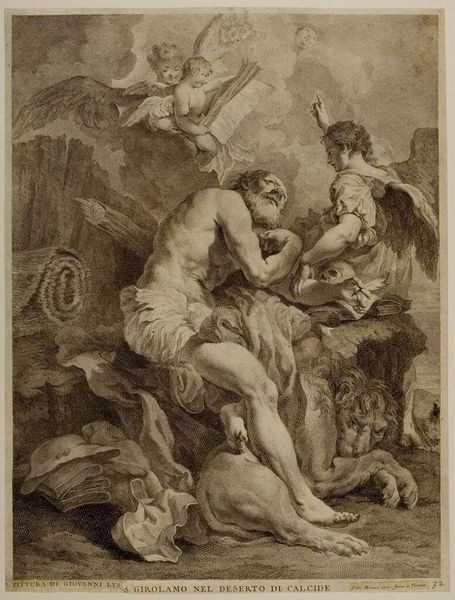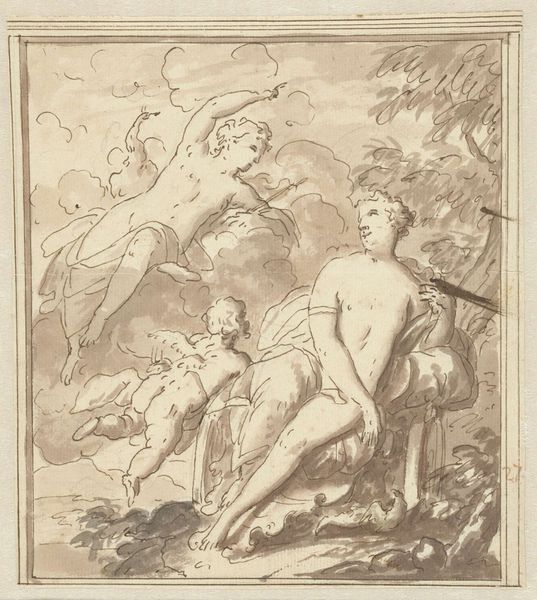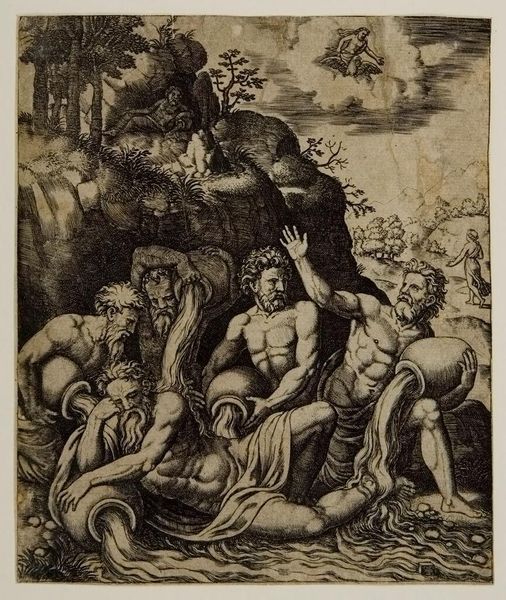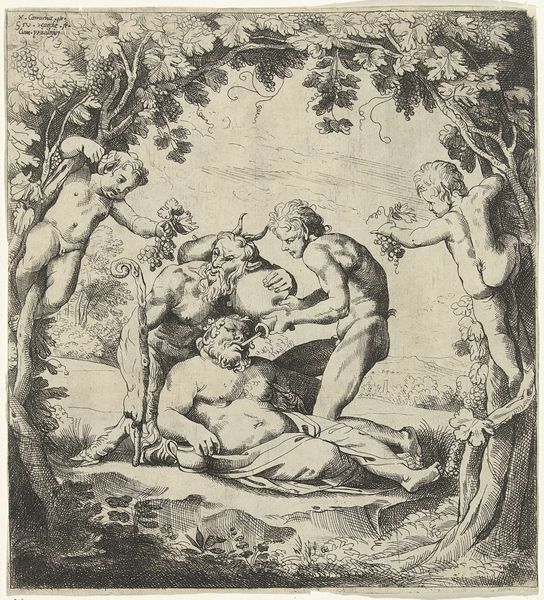
print, etching
#
allegory
#
baroque
# print
#
etching
#
figuration
Dimensions: height 276 mm, width 202 mm
Copyright: Rijks Museum: Open Domain
Editor: This is “Geluk en Vrede,” or “Happiness and Peace,” an etching by Cornelis Schut, created sometime between 1618 and 1655. The composition feels very dynamic; everyone's moving or reaching! How do you interpret this work formally? Curator: Note the pronounced contrast between the meticulously rendered figures in the foreground and the more ethereal cherubs and clouds in the background. It appears to hinge on the interplay between these textures, where smooth skin clashes with coarse hatching, directing your gaze around the plate. Editor: Yes, I see that. It’s almost like the foreground figures are weighed down by the dense hatching. Curator: Precisely. Consider how the circular composition—beginning with the embracing figures and looping upwards through the cherubs—guides the eye back to the grounding element, a large urn dominating the base. What impact does that have on the artwork? Editor: It’s like it anchors the lightness above and keeps the artwork together as a whole? I also like the symbolism that alludes to different stages of love represented by cherubs, and the sense of an Arcadian golden age, represented by people. Curator: A keen observation! Each figure and detail—down to the very texture of the etching—functions as a signifier, contributing to a grand allegorical representation. The etching becomes an object to visually ponder the concept of ‘peace and happiness.’ Editor: I've definitely gained a richer appreciation for Schut's formal techniques and use of textures to reinforce meaning, and how he successfully manages to produce something dynamic and exciting. Curator: Indeed, recognizing those deliberate decisions lets us connect more profoundly with the art.
Comments
No comments
Be the first to comment and join the conversation on the ultimate creative platform.
